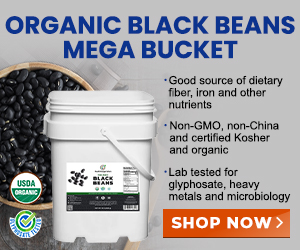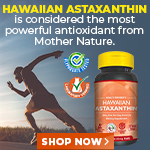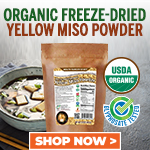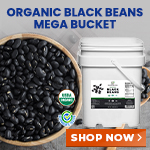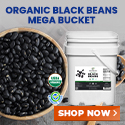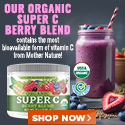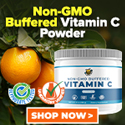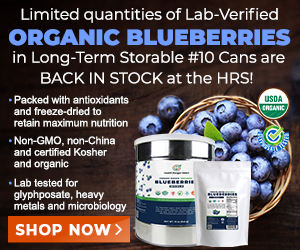Parents beware: 30 infant formulas found contaminated with high levels of aluminum
Wednesday, October 26, 2016 by: Vicki Batts
Tags: heavy metals, infant formula, aluminum
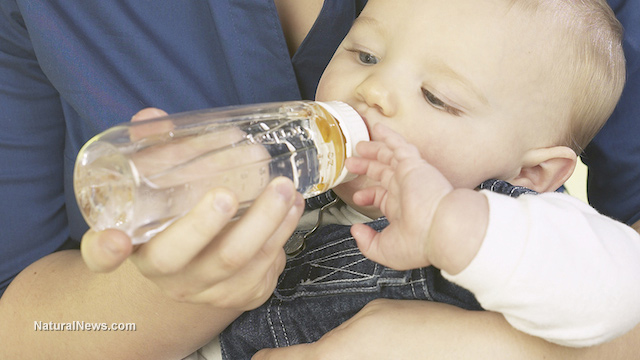
(NaturalNews) The presence of heavy metals in infant formulas has been a long-standing cause for concern. Even back in 1988, researchers discovered that aluminum contaminated many formulas, though some more than others. This early study noted that in human breast milk, aluminum appeared in fairly low amounts – about 50 micrograms per liter.
Way back then, researchers from the University of Alberta discovered that highly processed formulas, such as soy formula, preterm infant formula and formulas for specific metabolic disorders, contained up to 2,346 micrograms per liter. Now, that may may seem rather concerning – given that it is many times more than what is found naturally in human breast milk. In fact, it is not just concerning; it is downright alarming.
According to the Agency for Toxic Substances and Disease Registry (ATSDR), the EPA's current limits on aluminum in drinking water are between 0.05 milligrams and 0.2 milligrams per liter. A limit of 0.2 milligrams equates to about 200 micrograms. The ATSDR reports that the FDA's limit on aluminum for bottled water is also 0.2 milligrams per liter.
For some bizarre reason, there is no FDA limit on the amount of aluminum that can be added to food or medicine – which is why even though there is a limit on what is allowed in water, there is no limit on what can be present in baby formula. Supposedly, the limit in water is simply in place for taste and visual appearance. However, in spite of this, the effects of aluminum still seem to be poorly understood. From the ATSDR's own website:
We do not know if aluminum will cause birth defects in people.
That's just great, isn't it? They don't know if it will cause birth defects, and they don't know what effects it will have in children either. The agency states that in animal studies, young animals exposed to aluminum appeared to be less active and were weaker and less coordinated. Exposure also appeared to negatively impact memory. Might that suggest that aluminum has some kind of negative impact on neurological function, or at the very least, the peripheral nervous system? You'd think so, but the bureaucratic government agency simply states that these effects "are similar to those that have been seen in adults." Apparently, that makes it okay.
Sadly, because of this kind of nonsense, aluminum has continued to remain prevalent in infant formulas. A 2010 study from Keele University found that high levels of aluminum were present in 30 of the top-selling and most widely available infant formulas. Of course, manufacturers maintain that the toxic heavy metal is not "knowingly added" to the formula. It's quite obvious that while they may not be intentionally adding this toxin to these formulas – many of which are often given to sick babies – they are likely turning a blind eye to their questionable suppliers.
It takes a special kind of person to willingly and knowingly give newborns toxic food.
Many researchers believe that this contamination may be coming from somewhere within the supply chain. The researchers from the University of Alberta noted almost 30 years ago that "raw materials such as soybean, additives such as calcium and phosphorus, manufacturing processes and storage containers are potential sources of contamination of infant formulas."
Professor Exley, from Keele University, a world-renowned expert on aluminum, believes that regulatory bodies need to do their part to ensure that manufacturers actually try to reduce the amount of this toxin that is present in baby products. Exley states, "There is evidence of both immediate and delayed toxicity in infants, and especially preterm infants, exposed to aluminium."
Sources:
Blogs.NaturalNews.com
NCBI.NLM.NIH.gov
ATSDR.CDC.gov
Heavy metals at FETCH.news
Get independent news alerts on natural cures, food lab tests, cannabis medicine, science, robotics, drones, privacy and more.
Take Action: Support Natural News by linking to this article from your website
Permalink to this article:
Embed article link: (copy HTML code below):
Reprinting this article:
Non-commercial use OK, cite NaturalNews.com with clickable link.
Follow Natural News on Facebook, Twitter, Google Plus, and Pinterest
- Newly released JFK files reveal Pentagon's role in creating Lyme disease and covid in the same lab
- Trump's greatest betrayal so far: Accelerating Middle East wars, silencing dissent, and serving Zionist masters
- Trump nominates VACCINE ZEALOT Susan Monarez to lead the CDC, sidelining RFK Jr.'s reform efforts
- The hidden dangers in your kitchen: How cooking methods impact diabetes, cancer and aging
- STARDUST, a secretive Israeli-US startup, plans risky solar geoengineering experiment to BLOCK OUT THE SUN
- DEADLY DECEPTION: How COVID vaccines increased mortality rates and why authorities hid the truth
- Arkansas embraces medical freedom with landmark ivermectin law
- CDC finally halts $11 billion COVID funding scam as health officials admit the ‘pandemic’ was a fraud
- Lab leak confirmed? Boris Johnson's stunning reversal on COVID origins sparks global debate
- Home gardening for preppers: A beginner's guide to growing your own food
- Analysis: The coming economic collapse, a mass uprising and Trump's three secret weapons to halt the growing revolt
- The forgotten hormone hero: How vitamin C quietly balances mood, stress and reproductive health
- Festive flavors: The sweet history, nutritional profile and health benefits of pecan pie
- Elon Musk: Aliens could be here on Earth RIGHT NOW
- Dr. Mike Yeadon releases 15-minute testimony - WATCH - about genocidal intent of COVID “vaccines”
- YouTube’s double standard: CEO defends censorship while claiming free speech champion status
- California's social media censorship law struck down: A victory for free speech or a threat to online safety?
- Unraveling the paradox: Why intelligent individuals fall prey to everyday blunders
- Newly released JFK files reveal Pentagon's role in creating Lyme disease and covid in the same lab
- Elon Musk: Aliens could be here on Earth RIGHT NOW
- Reclaim your health: How midlife exercise reverses years of inactivity
- Trump reverses course on Gaza plan, says “nobody is expelling Palestinians”
- EPA advisor admits the agency is funneling billions to climate groups ahead of Trump’s return to White House
- Big Pharma's $8 Billion bribery scheme exposed: how doctors are pushed to prescribe junk science, not heal
- Space war brewing? Russia threatens to destroy Starlink satellites
- A lack of integrity in Academia: Harvard professor found GUILTY of fraudulent research to promote CRT theory
- Survival 101: Effective EMF blocking techniques
- Rep. Nancy Mace introduces bill to ban biological males from female facilities on federal property
- Mike Adams Sermon 66: God will DESTROY ISRAEL for its wickedness
- Pilots report mysterious lights 'moving at extreme speeds' across Oregon skies
- 5 Simple steps to boost your brainpower: How to strengthen executive function in a distracted world
- Historian warns Israel may be entering an “IRREMEDIABLE DECLINE”
- Florida takes a stand: DeSantis proposes permanent ban on mRNA vaccine mandates
- RFK Jr.'s SSRI antidepressant investigation sparks liberal meltdown, exposes Big Pharma's dangerous game
- OpenAI whistleblower who dissented against how the company trained ChatGPT found dead
- Sugarcane extract superior to cholesterol-lowering drugs?
- EPA advisor admits the agency is funneling billions to climate groups ahead of Trump’s return to White House
- The Health Ranger releases “Vaccine Zombie” song and music video, using AI-animated zombies for the music video
- California's social media censorship law struck down: A victory for free speech or a threat to online safety?
- Dr. Mike Yeadon releases 15-minute testimony - WATCH - about genocidal intent of COVID “vaccines”
- The pandemic as a tool for INDOCTRINATION: Understanding “The Indoctrinated Brain” by Dr. Michael Nehls
- Mike Adams releases country western hit single: Goin’ Back in Time is Comin’ Home
- Mike Adams releases music poetry sensation: A Child of God
- RFK Jr. clears key hurdle: Sen. Susan Collins backs controversial HHS nominee, signaling a new era for health policy
- Florida takes a stand: DeSantis proposes permanent ban on mRNA vaccine mandates
- Unpacking the Lies That We’ve Been Fed – new song and music video released by Mike Adams, the Health Ranger
- Mike Adams releases new song and music video: Nothing More Disgusting Than a Globalist
- Congratulations to the FULLY UNVACCINATED as you resisted the COVID-19 PROPAGANDA MACHINE fueled by over $100 BILLION
- “Why we influenced the 2020 elections”: Facebook files reveal the coordinated effort to bury the Hunter Biden laptop story
- Michigan sheriff announces criminal investigation into 2020 election crimes, Dominion Voting Systems
- Israeli soldiers accused of even more torture and abuse in the West Bank
- Migrants are taking advantage of recent hurricanes to scam residents and loot their homes
- House Intelligence Committee calls for the ARREST and PROSECUTION of Dr. Anthony Fauci
- Peter Rost exposes Big Pharma corruption in his book “The Whistleblower: Confessions of a Healthcare Hitman”
- Red Cross issues warning to stop blood plasma donations from vaccinated people
- Scientists confirm: GENIUS brain function can be spontaneously unleashed in humans without any apparent cause
- EPA advisor admits the agency is funneling billions to climate groups ahead of Trump’s return to White House
- HYSSOP: What research reveals about the health benefits of this ancient holy herb
- Two containers with completed ballots fall out of truck in Florida
- Fully vaccinated about to see “tsunami” of illness and death, warns virologist
- Global leaders unite to clamp down on “misinformation” with UN-backed Cascais Declaration
- BREAKING: 2025 NDAA authorizes mandatory military draft of WOMEN across America… as Pentagon pursues global NUCLEAR war with both Russia and China at the same time
- Michael Yon warns of a ZIONIST TAKEOVER in Trump’s second administration
- BOMBSHELL: DNA testing kits are a SCAM to develop ethnic-specific bioweapons
- Ozempic and Wegovy weight loss drugs are injectable LIZARD VENOM PEPTIDES that may unleash a devastating wave of organ failure… side effects align with symptoms of SNAKE BITES
- Israeli soldiers accused of even more torture and abuse in the West Bank
- These 13 countries just signed an agreement to engineer a global FAMINE by destroying food supply
- NASA admits that climate change occurs because of changes in Earth’s solar orbit, and NOT because of SUVs and fossil fuels
- RFK Jr. clears key hurdle: Sen. Susan Collins backs controversial HHS nominee, signaling a new era for health policy
- Sermon 30: How Jesus reveals Caesar’s FAKE CURRENCY and FALSE AUTHORITY
- Coriander seeds: Ancient medicine backed by modern science
- Arizona officials claim Maricopa County needs 10-13 days to tabulate results of the election
Science News & Studies
Medicine News and Information
Food News & Studies
Health News & Studies
Herbs News & Information
Pollution News & Studies
Cancer News & Studies
Climate News & Studies
Survival News & Information
Gear News & Information
News covering technology, stocks, hackers, and more



"Big Tech and mainstream media are constantly trying to silence the independent voices that dare to bring you the truth about toxic food ingredients, dangerous medications and the failed, fraudulent science of the profit-driven medical establishment.
Email is one of the best ways to make sure you stay informed, without the censorship of the tech giants (Google, Apple, Facebook, Twitter, YouTube, etc.). Stay informed and you'll even likely learn information that may help save your own life."
–The Health Ranger, Mike Adams










